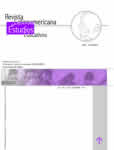Authors
Abstract
The article presents the results of the graphs analysis in Chemistry text books regarding chemical bonds. The images presented, as well as the texts that accompany them, were analyzed. The most important categories studied were: figures that induce errors, contextual errors, text - figure connection and sequence, among others. A deficient relation between the figures represented and the contents that followed them was found. Additionally, there is no graphic or content sequence, according to the development of the concepts in the scientific literature. The mayority of the figures are presented in the text, without knowing some scientific contributions in the field of chemical bonds.
References
CHANG, R. (1999). Química. México: Mc Graw – Hill, sexta ed.
CAREY, Francis A. (1999). Química Orgánica. Aravaca (Madrid) España: McGraw – Hill, tercera ed.
DUVAL, R. (1999). Semiósis y pensamiento. Cali: Universidad del Valle.
EBBING, D. (1997). Química General. México: Mc Graw – Hill, quinta ed.
FESSENDEN, R. J. y JOAN S. (1983). Química Orgánica. México D. F.: Grupo Editorial Iberoamericana.
IZQUIERDO, M. y Col. (2000). Los libros de texto: utilidad, dificultades de lectura y de interpretación. La clase comunicativa: una estrategia para una enseñanza de calidad. Universidad Autónoma de Barcelona.
LEMKE, J. L. (1997). Aprender a hablar ciencia. Barcelona: Paidós.
LÓPEZ, R. y SALDARRIAGA, J. A. (2003). Las representaciones gráficas (ciclos) y su influencia en el desarrollo de competencias interpretativas en estudiantes de ciencias naturales. Tesis de grado. Universidad de Caldas.
MANKU, G. S. (1988). Principios de Química Inorgánica. México: Mc Graw – Hill, primera ed.
MONDRAGÓN, C. H. (2001). El enlace químico. En: C. Mondragón. Química I Santillana. Bogotá: editorial Santillana.
MORA, P. W. (2004). Colisiones y tipos de enlaces. En, W. Mora, Interacciones, conservación y cambio químico; Molécula I. Bogotá: Editorial Voluntad S. A.
PERALES, F. J. y JIMÉNEZ, J. (2002). Las ilustraciones en la enseñanza-aprendizaje de las ciencias. Análisis de libros de texto. Enseñanza de las ciencias, Vol 20, Nº 3, 369-383.
PRENDES. (1997). Análisis de imagenes de textos escolares: descripción y evaluación. www.lmi.ub.es/te/any97/prendes_sp/
PRO, M. (2003). Aprender con imágenes. Barcelona: Paidós.
TAMAYO, Ó. E., (2006). Representaciones semióticas y evolución conceptual en la enseñanza de las ciencias y las matemáticas. Revista Educación y Pedagogía, Nº 45.
http: //www.cnnet.club.edu/quim/Q_3451/modulo1/modulo1d_files/descripción.html
http: //www.lmi.ub.es/te/any97/prendes_sp/p3.html
http://www.el-libro.com.ar/archivo_documental/PDFs/4-005-Barros.pdf

 PDF (Español)
PDF (Español)
 FLIP
FLIP



















